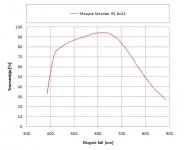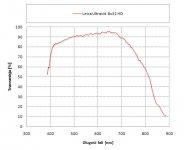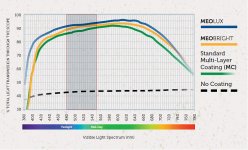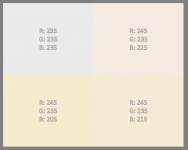-
Welcome to BirdForum, the internet's largest birding community with thousands of members from all over the world. The forums are dedicated to wild birds, birding, binoculars and equipment and all that goes with it.
Please register for an account to take part in the discussions in the forum, post your pictures in the gallery and more.
You are using an out of date browser. It may not display this or other websites correctly.
You should upgrade or use an alternative browser.
You should upgrade or use an alternative browser.
Meopta Meostar Lineup (1 Viewer)
- Thread starter jgraider
- Start date
More options
Who Replied?Ah well, just daydreaming, not fully awake yet 3but the 7x42 sounds like a beauty, read Troubador's review on it yesterday.
Ries it is a lovely bino and introduced me to the pleasures of 7x.
Lee
So, just to guess at overall level of quality, it would be something like (from best -> worst):
Meostar B1 Plus
Meostar B1.1
Meostar B1
Now where in this lineup would the "Air" fit? Also, what exactly are the differences (aside from external appearance) between the various models?
Meostar B1 Plus
Meostar B1.1
Meostar B1
Now where in this lineup would the "Air" fit? Also, what exactly are the differences (aside from external appearance) between the various models?

So, just to guess at overall level of quality, it would be something like (from best -> worst):
Meostar B1 Plus
Meostar B1.1
Meostar B1
Now where in this lineup would the "Air" fit? Also, what exactly are the differences (aside from external appearance) between the various models?
I am certainly a fair newbie to the world of understanding Meopta's lineup as I questioned the same just a few months ago. But from my understanding there is little if any difference between the B1.1 and B1, or none you might optically see. I could be wrong here. But the B1 Plus isn't even 'out' yet, ....and from what I gather, other than smoothing out the armor by taking out the bumps, not sure if much will be done there either other than an updated coating or two? ...
The Air...? Someplace near but perhaps just below the quality of the current B1.1 ...again, no idea, just guessing as I was with the Plus. Lee on the forum might know more, and he presented an interview with the Meopta rep on the forum too, and a good read.
So, just to guess at overall level of quality, it would be something like (from best -> worst):
Meostar B1 Plus
Meostar B1.1
Meostar B1
Now where in this lineup would the "Air" fit? Also, what exactly are the differences (aside from external appearance) between the various models?
I haven't handled a B1 Plus yet but can't see any optical difference between B1 and B1.1 and I am pretty sure Meopta said there isn't any, just the change of dioptre adjuster.
Lee
pbjosh
missing the neotropics

I'm very curious to see the new Meopta Air binoculars, as well as the purported B2s. For the time being, I will admit I find their product naming and lineup quite confusing, and find that they don't distinguish their products terribly well by quality on their website.
On another note, does anyone know if they'll continue with the MeoPros now that they have the Optikas?
On another note, does anyone know if they'll continue with the MeoPros now that they have the Optikas?
eitanaltman
Well-known member
So, just to guess at overall level of quality, it would be something like (from best -> worst):
Meostar B1 Plus
Meostar B1.1
Meostar B1
Now where in this lineup would the "Air" fit? Also, what exactly are the differences (aside from external appearance) between the various models?
My understanding is the B1 has been virtually unchanged over the years except perhaps some slight changes in coatings over time (they aren't as yellow as they used to be). The Meostar B1.1 is still the same binocular, just with a locking diopter.
The B1 Plus is, again, still the same binocular, but with new exterior aesthetics and an upgrade to Meopta's best coatings, going from "MeoBright" to "MeoLux" which should put it much more on par with premium 8x32's from the big three. I believe it also upgrades the protective / hydrophobic coatings to the newest version (MeoShield > MeoDrop).
So B1.1 = the B1 with a locking diopter, and B1 Plus = the B1.1 with new aesthetics and upgraded coatings. And the mysterious future B2 is in theory a totally new thing.
According to the graph from Meopta (attached) the upgrade from MeoBright to MeoLux should put it more on pair with an Ultravid HD in terms of transmission, with a significant boost down in the blue end and some increase in the red end too.
I also attached Allbinos graph of the Meostar B1 8x32 which agrees quite well with Meopta's MeoBright graph, and the Allbinos graph of the Ultravid HD 8x32 which is not too far off from the MeoLux.
IMO, the only thing the Meostar 8x32 gives up to the alphas optically is the transmission, where the weak blue transmission (and to a lesser extend red) gives it a slight yellow color cast. It's not extreme, but comparing my Meostar vs Ultravid HD (both 8x32) it's obvious the Meopta lags behind with a slight yellow cast to whites and dull desaturated greenish cast to blues, and reds don't have the same vividness. The funny thing is they are still BRIGHT, since peak transmission in the center is comparable, it's more about color balance due to deficits at the extremes (as you can see in the graphs)
So I'm very intrigued by the B1 Plus!
Attachments
Gijs van Ginkel
Well-known member
eitanaltman, post 28
None of the transmission spectra of the Meopta Meostar 8x32 B1 we measured does support your statement, that this binocular has a slight yellow bias (around 550 nm). If any bias can be considered it is more shifted to red, see the spectra we measured on the WEB-site of House of Outdoor. I also checked 5 minutes ago with a Jarrel-Ash grating monochromator.
Gijs van Ginkel
None of the transmission spectra of the Meopta Meostar 8x32 B1 we measured does support your statement, that this binocular has a slight yellow bias (around 550 nm). If any bias can be considered it is more shifted to red, see the spectra we measured on the WEB-site of House of Outdoor. I also checked 5 minutes ago with a Jarrel-Ash grating monochromator.
Gijs van Ginkel
eitanaltman
Well-known member
Hi Gijs - I believe I found what you are referring to, is it this document?
https://www.houseofoutdoor.com/wp-c...an-de-Meopta-Meostar-B1-8x32-def-mei-2016.pdf
So, first, a huge caveat as I am an "amateur enthusiast" not a trained expert in visual spectrum / color science.... although I do have fairly extensive experience with video/display calibration and so tend to couch this more in terms of "white balance" and "color gamut" to clarify for my own thought process. So please feel free to pick away if I say something which is objectively false...
That said, I think it's important to differentiate between the measured transmission spectra and the PERCEPTION of colors by our eyes/brain. Obviously, these two are related, but I don't think it's as simple as "the transmission of this binocular peaks at ~625nm, which is closer to red than yellow, therefore it cannot have a perceived yellow bias."
For one thing, that ignores the rest of the visible spectrum, our perception of the colors is influenced not just by the peak values but also the deficits at other wavelengths. In the case of the Meopta, I would posit the "yellowing" is more related to the deficit in the blue end (and, to a lesser extend, the far red end) than the fact that transmission in the 600-650nm range is a bit higher than at 550nm.
The difference I think is less about the center of the visible spectrum but the fall-off closer to the blue/red extremes. Assuming I got the correct document link above, it appears your measured spectra cover the range of approximately 450nm - 675nm. Even then the Leica UV has an obvious advantage below ~500nm. It's hard to eyeball but I estimate at the far left edge of the graph the two Meostar samples are in the 77-79% range, roughly agreeing with the Allbinos data, and the Allbinos graph shows the Meoptas fall off a cliff below 450nm.
While this may not impact overall brightness (which seems to be more influenced by the 500-550nm range) it would certainly impact blue saturation relatively. Some quick googling shows the blue cone cell sensitivity peaks around 420nm, at which point Allbinos shows them dropping to ~75% or lower transmission.
Your data shows the two Leica UV samples are more in the 83-84% range at 450nm (curiously the HD is a bit better than the HD+ here?). The Allbinos data roughly agrees across all UVHD/HD+ models I've looked at (8x32 HD, 8x42 HD, 10x42 HD, 10x42 HD+) and more importantly the UV HD models maintain transmission well above 80% all the way down to near 400nm.
My theory is the gap in transmission below 500nm, which gets even wider below 450nm, is why deep blue colors appear a bit "dingier" and desaturated compared to the UVHD. And the diminished blue saturation would certainly have an impact on white balance and make whiter objects appear a bit "yellowed" or "creamy", perhaps a bit "pinkish" too, depending on the specific color and ambient lighting. This is a common phenomenon I've observed especially with older silver prism binoculars that have deficits in blue transmission.
I also believe the Leicas have a similar advantage at the far red extreme, with sustained high transmission out to 700nm and beyond, which in my opinion is the reason they can produce such saturated, deep reds, and the broad transmission out to the extremes of the visible spectrum are what gives that characteristic "Leica contrast" and vibrancy. A slight loss in the extreme red would shift the white balance back towards green, and I think the difference between a "creamy yellow" or "greenish yellow" color cast vs one with a more "warm yellow" or almost orangish cast (assuming they are roughly similar otherwise) is that extreme red end of the spectrum.
Also, I found your comment a bit surprising because the "yellow" cast of Meoptas (and also some Zeiss optics they produced like the prior Diascopes) is fairly common noted here and elsewhere. Allbinos describes the 8x32 B1 as "noticeable yellow with pink hue from time to time", the older 10x42 B1 as "distinct hue of warm yellow", and a newer 10x42 HD as "slight yellow-green hue". It didn't seem particularly controversial to describe the Meoptas as having a bit of a "yellow bias" to the whites and somewhat desaturated/yellowed blue tones.
(Just for fun, I did a very crude experiment with basic RGB values on my PC, see attached. I simulated a binocular with *slightly* better red transmission than green (245 vs 235) and a slight deficit in blue, which I decreased further (you can see blue go from 225 to 215 to 205 going clockwise) and a neutral light gray square in the upper left for reference (235/235/235). This will obviously depend on the monitor, but my perception is that the upper right square (slight deficit in blue transmission) shows as a bit creamy pinkish, but as the blue drops it gets progressively more yellowed.... so my theory is that as the blue loses saturation, the perception of "yellowing" begins to overtake the slight bump in red saturation and the "pinkish" gives way to "yellowish" eventually.
https://www.houseofoutdoor.com/wp-c...an-de-Meopta-Meostar-B1-8x32-def-mei-2016.pdf
So, first, a huge caveat as I am an "amateur enthusiast" not a trained expert in visual spectrum / color science.... although I do have fairly extensive experience with video/display calibration and so tend to couch this more in terms of "white balance" and "color gamut" to clarify for my own thought process. So please feel free to pick away if I say something which is objectively false...
That said, I think it's important to differentiate between the measured transmission spectra and the PERCEPTION of colors by our eyes/brain. Obviously, these two are related, but I don't think it's as simple as "the transmission of this binocular peaks at ~625nm, which is closer to red than yellow, therefore it cannot have a perceived yellow bias."
For one thing, that ignores the rest of the visible spectrum, our perception of the colors is influenced not just by the peak values but also the deficits at other wavelengths. In the case of the Meopta, I would posit the "yellowing" is more related to the deficit in the blue end (and, to a lesser extend, the far red end) than the fact that transmission in the 600-650nm range is a bit higher than at 550nm.
The difference I think is less about the center of the visible spectrum but the fall-off closer to the blue/red extremes. Assuming I got the correct document link above, it appears your measured spectra cover the range of approximately 450nm - 675nm. Even then the Leica UV has an obvious advantage below ~500nm. It's hard to eyeball but I estimate at the far left edge of the graph the two Meostar samples are in the 77-79% range, roughly agreeing with the Allbinos data, and the Allbinos graph shows the Meoptas fall off a cliff below 450nm.
While this may not impact overall brightness (which seems to be more influenced by the 500-550nm range) it would certainly impact blue saturation relatively. Some quick googling shows the blue cone cell sensitivity peaks around 420nm, at which point Allbinos shows them dropping to ~75% or lower transmission.
Your data shows the two Leica UV samples are more in the 83-84% range at 450nm (curiously the HD is a bit better than the HD+ here?). The Allbinos data roughly agrees across all UVHD/HD+ models I've looked at (8x32 HD, 8x42 HD, 10x42 HD, 10x42 HD+) and more importantly the UV HD models maintain transmission well above 80% all the way down to near 400nm.
My theory is the gap in transmission below 500nm, which gets even wider below 450nm, is why deep blue colors appear a bit "dingier" and desaturated compared to the UVHD. And the diminished blue saturation would certainly have an impact on white balance and make whiter objects appear a bit "yellowed" or "creamy", perhaps a bit "pinkish" too, depending on the specific color and ambient lighting. This is a common phenomenon I've observed especially with older silver prism binoculars that have deficits in blue transmission.
I also believe the Leicas have a similar advantage at the far red extreme, with sustained high transmission out to 700nm and beyond, which in my opinion is the reason they can produce such saturated, deep reds, and the broad transmission out to the extremes of the visible spectrum are what gives that characteristic "Leica contrast" and vibrancy. A slight loss in the extreme red would shift the white balance back towards green, and I think the difference between a "creamy yellow" or "greenish yellow" color cast vs one with a more "warm yellow" or almost orangish cast (assuming they are roughly similar otherwise) is that extreme red end of the spectrum.
Also, I found your comment a bit surprising because the "yellow" cast of Meoptas (and also some Zeiss optics they produced like the prior Diascopes) is fairly common noted here and elsewhere. Allbinos describes the 8x32 B1 as "noticeable yellow with pink hue from time to time", the older 10x42 B1 as "distinct hue of warm yellow", and a newer 10x42 HD as "slight yellow-green hue". It didn't seem particularly controversial to describe the Meoptas as having a bit of a "yellow bias" to the whites and somewhat desaturated/yellowed blue tones.
(Just for fun, I did a very crude experiment with basic RGB values on my PC, see attached. I simulated a binocular with *slightly* better red transmission than green (245 vs 235) and a slight deficit in blue, which I decreased further (you can see blue go from 225 to 215 to 205 going clockwise) and a neutral light gray square in the upper left for reference (235/235/235). This will obviously depend on the monitor, but my perception is that the upper right square (slight deficit in blue transmission) shows as a bit creamy pinkish, but as the blue drops it gets progressively more yellowed.... so my theory is that as the blue loses saturation, the perception of "yellowing" begins to overtake the slight bump in red saturation and the "pinkish" gives way to "yellowish" eventually.
Attachments
Users who are viewing this thread
Total: 2 (members: 0, guests: 2)







